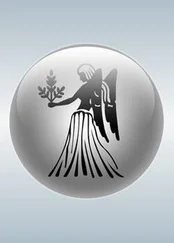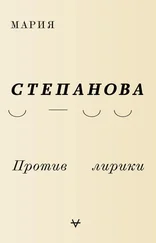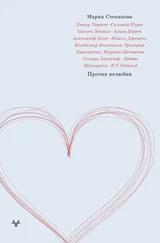In contemporary Europe, with its barely healed wounds, black holes, and traces of displacement, a well-preserved family archive is a rarity. A set of furniture and china that has come together over decades, inherited from aunts and grandmothers and once thought of as an ancient burden, now deserves its own special memorial. Those who were forced to flee (it hardly matters from whom they fled) burned documents, shredded photographs, cut off everything below the chin — officer epaulets, army greatcoats, civil service uniforms — and left their papers with other people. By the end of the journey very little is left for the memory to cling to, and to set sail on.
Exercises in bringing the past closer to understand it remind me of those school tests where you are asked to tell a story based on a picture, or to draw a picture based on a few existing elements: nose, tail, and paw. Whether you like it or not, you are simply more visible than those who came before you. And we have nothing to lay our foundations on — like most of the people who escaped from the black ink of the twentieth century, taking only what they could.
What can you do when your imagined subject’s possessions amount to almost nothing: a postcard and five photographs that have survived by accident? The imagination bodies forth, the objects acquire mass and the links between them, both past and invented, and smeared thickly with a priori knowledge of that object, establish their own order. But objects from the long distant past look as if they’ve been caught in the headlights, they’re awkward, embarrassingly naked. It’s as if they had nothing left to do. Their previous owners and functions are gone and they are doomed to aimless existence. It is much like retiring from work and finding yourself unable to build a new life. The list of clothing I took to pioneer camp as a ten-year-old (three white t-shirts, blue shorts, a pioneer cap), is hardly different from the lists of property that were so lovingly drawn up in the seventeenth century, the frock coats, garters, and breeches. They slowly grow cold in the absence of human touch, of being spoken of and remembered, and each item is suffused with a touching glow when it is brought briefly back out of oblivion. Together with a white cloth of silver doublet and another black silk doublet we find: five East Indian wicker baskets, a green armosin sash, six hair wigs, a cane, being a walking stick with an ivory knob, and a Turkish tobacco pipe . This comes from a list of items belonging to Lodewijk van der Helst, drawn up in Amsterdam on January 7, 1671, on the occasion of moving to his mother’s. It’s a long list and nothing is left out, down to the “various silks and other textiles of “antique” clothes and what belongs to it, as part of the art of painting.” We know almost nothing about the artist Edo Quitter, except that he died in 1694 and all that remains is a list of his still-living possessions, drawn up December 10:
Three old black hats
A red Polish hat
A red leather belt for the waist
Two black sleeves
Two pairs of old shoes
A silver signet ring
A pair of purple slippers
*
Rafael Goldchain’s book I Am My Family: Photographic Memories and Fictions might be described as an album or a catalog, the paper equivalent of a completed art project. This extraordinary book’s concern is memory and the vanity of memory.
Goldchain was born in Chile in 1953. He is what is known as a second-generation survivor, a son and grandson of those who managed to escape.
From the early 1920s until the eve of World War Two, most of my family members emigrated from Poland to Venezuela, Costa Rica, Brazil, Argentina, or Chile. A few others sought a new life in the United States or Canada. Some left Poland intending to come back with funds to help their families but were prevented by the outbreak of the war. All of my extended family members who remained in Europe after the beginning of World War Two perished in the Shoah.
The project (I don’t know how else to describe it) begins like other such projects: the father tells the son a story, and as the story continues the father becomes more deeply immersed in it. It seems Goldchain wasn’t very interested in his own family history until he became a parent himself. No one spoke of the past in his home, the silence was sealed tight, much like a message in a bottle, not yet ready to be opened. This is usual: “we didn’t speak of those things,” “he kept his silence,” “she never wanted to talk about it” — the grandchildren and great-grandchildren of survivors quote the same phrases. Goldchain lived in various places: Jerusalem, Mexico, Toronto, and it was only when he was close to forty and his first son was born that he realized he was the same age as his grandparents on the eve of the Second World War, and that he knew nothing about them, or even about those he had lived with his whole life.
There comes a day when the scattered pieces of knowledge need to be fixed in a transmission line. It’s a truism that the “dough” of comprehension only rises to its shape in the moment of telling, and in this telling it then sags and subsides. Here’s the emblematic account, a picture from the golden library of generalized experience: a mother or father is recounting family history to the child, passing it from one mouth to another. This is how Art Spiegelman begins Maus , the classic work about the Holocaust and how it is spoken of; this is how hundreds of other works begin:
A lad comes to his father’s side
And asks, this little lad:
Tell me, Daddy, what is good
And tell me what is bad?
When the listener is a child, simplicity isn’t just appropriate — it’s essential. The sharp corners round themselves, the lacunae quietly disappear. The tale of the past constantly risks becoming a tale of the future. We have to make the knowledge bearable, skirt the painful, repair connections — or the world will fall apart.
Only a few photographs remain of the huge clan of Goldchains living in Poland a century ago, and they are all reproduced at the end of the book in an appendix. The book begins with an introduction, and then a warning by the author, and only then the real meat of the book: eighty-four photographs recreating the body of the family. Each is presented like a studio photograph on a monochrome background, the portrait extending downward to the chest. They include men and women in hats, heavy-boned women with piercing gazes, little jug-eared yeshiva students, peasants from the shtetl, imposing gentlemen to whom the respectable labels “Don Moses” or “Don Samuel” adhere as a matter of course. There’s no sleight of hand about it, and I won’t try to pretend that there is. You can see immediately that despite the different ages and genders, the face is the same — we are following the family resemblance down a mirrored corridor. The Goldchain family album is a collection of self-portraits, made in an attempt to resurrect a lost connection, to find oneself in the features of another.
My first ancestor self-portrait — based on my maternal grandfather, Don Moises Rubinstein Krongold, who had lived in our house from 1964 until 1978 — was motivated by the desire to create an image purely out of memory that could be thought of as defining my life in a foundational way, an image that I could point to and say, “This is where I came from.”
The Soviet poet Gennady Aygi has a book in which he translates into words the first months of his daughter’s life with a deep attentiveness, silence by silence. He describes what he calls the “period of likenesses,” a short period of time during which familiar and unfamiliar faces and expressions flit across the baby’s face like passing clouds, as if the fretful ancestors looked down at the mirror-face of the child, both recognizing it and impressing on it their own. Goldchain says something similar when he describes his working process as being a spiritual medium: ghostlike shapes swim up from the depths of the image, but only briefly; the likenesses are not perfect, they can’t be held fast.
Читать дальше











